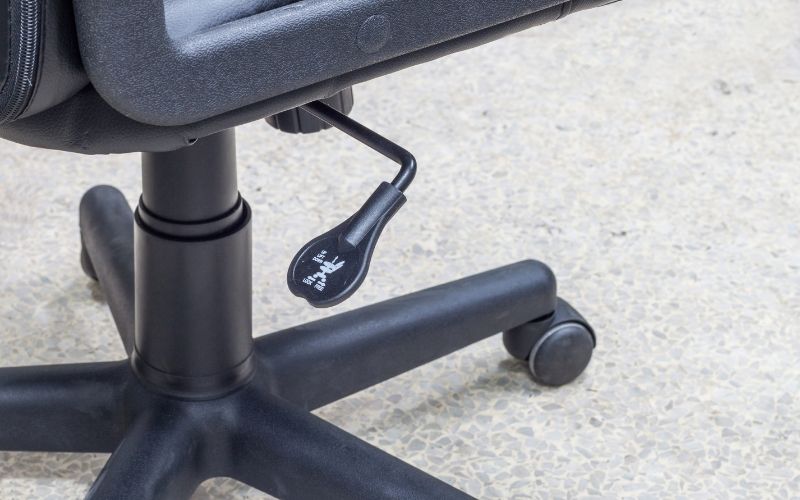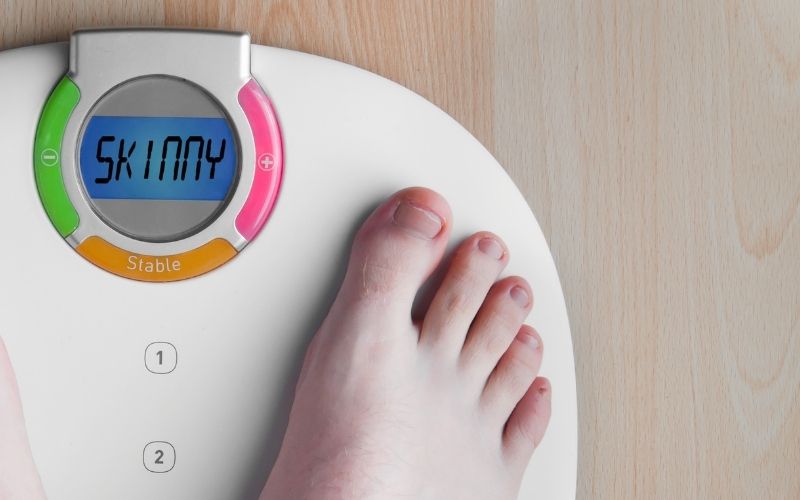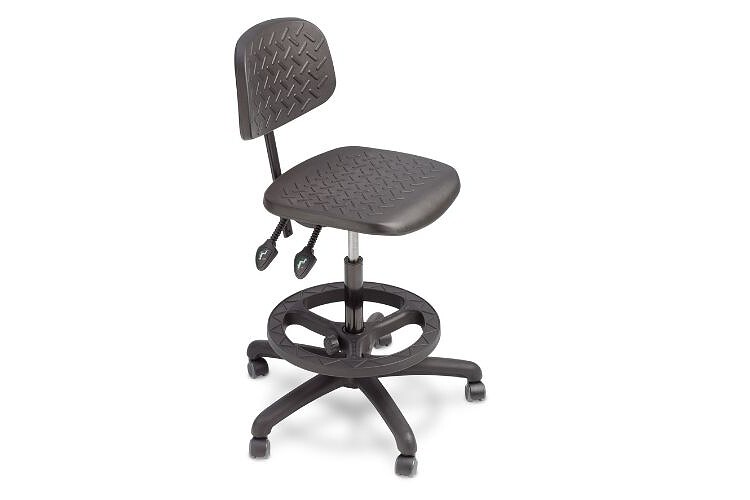We are likely unaware of how we subconsciously adjust ourselves to fit our workspace when it should be the other way around. Sometimes we don’t realize how many of our habits leave long-term implications to our health. The way we sit at our desks is no exception.
If your seat is too high, it often causes lower back pain, carpal tunnel syndrome, and rotator-cuff strain in your shoulders. In comparison, if your chair is too high, you may end up getting Golfer’s Elbow — causing pain and inflammation on the inner side of the elbow.
It’s a cause of concern, especially since we spend 6 to 8 hours a day on average sitting improperly at our desks. Here’s the good news: after reading this article, you’ll know what to do about it. With some simple adjustments, we can make our desklife safer — and it could give your productivity a boost!
From having a clearer understanding of how high is too high to what to do about it — we’ve broken it down for you.
Table of Contents
What To Do You If Your Chair is Too High

If your chair is too tall for your taste and is causing a bit of discomfort, you don’t necessarily have to resort to getting a new one (at least not right away).
Ideally, the thing to do is to adjust your chair’s height. The succeeding sections walk you through how to do this.
However, there are chairs whose height can’t be adjusted. If you find yourself in that situation, here are several things you can do to make yourself more comfortable.
Use footrests
One indicator that your seat is too high is if your feet don’t lay flat on the floor. If you can’t adjust your chair, consider using a footstool to prop up your feet instead of letting them dangle all day.
Raise your desk’s height

Sometimes your chair is a lot taller than your table and may find yourself leaning forward too much, putting a strain on your neck and shoulders.
You can try to raise your table to avoid straining yourself further. If this isn’t possible, try placing sturdy boards or blocks underneath their legs.
Replace your seat
Before you decide to do this, make sure you try all the previous steps. If you have and it still doesn’t work out, it might be time to explore getting a new chair.
Although it may cause you to shell out money, it’s also the perfect time for you to invest in a chair that meets your needs.
How to Lower the Height of Your Office Chair
If you want to lower your chair to the ideal position, follow these simple steps:
1. Stay in your work area

Bring the chair to where you are most likely to use it. It will allow you to consider the other things found in your surroundings, such as your desk. Sometimes, it helps you determine how high your seat should be, relative to the height of your table.
2. Explore the parts of your chair
New office chairs are typically adjusted pneumatically, thanks to that little lever below your seat that controls how high or low your chair can be. If you can’t find it, you may be using an older model — don’t worry, we have a section specifically with chairs with no levers.
Some modern chairs have two levers — one controls the height, the other adjusts the backrest. These vary depending on the type of chair you have.
Understanding the levers or the buttons allows you to lower your chair to the appropriate height. If you aren’t sure which lever does what, you can either go through your chair’s instructions or do trial-and-error until you figure it out.
3. Adjust the height

Locate the pneumatic level underneath your chair. The easiest way to do this is to stand in front of it so you have a clear view.
Chairs controls may be different depending on the model, so make sure you try pulling and pushing the lever to see which one allows the seat to move. Use your other hand to lower the seat gently.
You can use your legs to determine the appropriate height — wait until the tip is just below your kneecap. It should allow you to sit comfortably on your chair with your feet flat on the floor.
4. Try it out
Don’t assume you’ve lowered the chair to the appropriate height — the best way to figure it out is to sit on it. Remember, your feet should be flat on the floor and your knees slightly lower than your waist.
If you find your toes dangling or if your knees are too high, repeat the previous step. If you’re in the correct position, then you’re good to go!
How Do You Lower a Chair That Doesn’t Have a Lever?
So you’ve checked your chair, but you can’t seem to find levers! Yes, this is possible — there are chair models that don’t use pneumatic levers. You can adjust and lower these older models in other ways.
Let’s look at two types and lower these.
Chairs Using Clockwise and Counterclockwise Adjustments
- Begin by standing next to the chair. You’ll have a difficult time adjusting its height if you’re sitting down.
- Turn the seat of the chair clockwise or counterclockwise. There’s no one universal rule that determines which direction makes it raise or lower. You’ll have to observe it after several turns.
- Once you’ve adjusted the height, sit down and see if it’s right for you. If it is, great — you’re all set.
- If the seat is still too high, stand up again and continue turning it. Repeat this until you find the height that works for you.

Chairs Using Under-Chair Bolt Adjustments
- Look underneath the chair’s seat and you should spot a large bolt located at the bottom of the chair.
- Turn the bolt manually — as you do this, the seat should raise or lower. When it reaches the height you think suits you, stop turning it.
- Sit on the chair to see if your estimations are correct. If you find you need further adjustments to the height, repeat the previous step.
- Once the seat is at the height you want, lock the bolt. It keeps the chair at your preferred position even if you move it.

Just because a chair doesn’t have pneumatic levers or buttons doesn’t make adjusting its height complicated. It may take a bit more time and effort, but it’s something you can easily do.
How to Fix a Chair That Won’t Lower
A common problem people encounter while sitting on their office chairs is when it keeps sinking. A less experienced challenge — but just as frustrating — is when it refuses to go down! If you’ve ever been in this situation, there are several quick fixes to help you resolve it.
First things first — why does it happen?
When a chair refuses to sink, it could be caused by any of these:
- It’s a weight problem (too light)
- There’s something wrong with the lever
- There’s something wrong with the cylinder itself
To help you with each of these possible causes, here’s what you can do.
It’s a Weight Problem

When you lift the lever in an office chair, it presses a button in the cylinder. That action causes a valve to open and release liquid or gas into the cylinder. In turn, it pushes the piston upward.
It’s the piston that carries the weight of the chair and makes it rise. Releasing the lever allows the valve to close and locks the chair in its position.
To lower the chair, you need to add weight so the piston can’t carry it, causing the seat to sink. If this isn’t happening, one possibility is because you’re too light.
Bouncing on the seat may put more weight on the seat — this may allow the seat to go down. Another way is to ask someone heavier to adjust the chair for you.
It’s a Lever Problem

If you’ve ruled out the weight problem and your chair still won’t lower, turn your attention to the lever. It may have loosened over time.
Once this happens, it won’t be strong enough to push down on the button that releases the gas or liquid into the cylinder.
Since the lever is loose, here’s how you can tighten it.
First, remove the seat. Although how to do this varies between chair types, it’s typically easy. You can refer to your chair’s instructions on how to do it.
Once you’ve removed the seat, you’ll be able to see the cylinder’s housing. If there’s a covering for the housing, you’ll have to remove that as well.
Look for a screw that attaches the lever to the housing. It’s the one you need to tighten.
Use a screwdriver to turn it clockwise. That should tighten it.
Return everything to its proper place once, and your seat should sink and rise as necessary.
It’s a Cylinder Problem
If it’s neither the weight nor the lever, then you’re left with the cylinder. And with this, the only thing that’ll fix it is for you to replace it.
Before you panic, let me tell you this — it’s not as complicated as it may seem.
The first thing you need is a replacement cylinder — you have to ensure it matches the one you have. Otherwise, it won’t fit. You can call your chair’s manufacturer to ask about it. Or, take the old cylinder with you when you go out to buy the new one.
When you’re replacing the cylinder, begin by laying the chair on its side. Lubricate the chair’s base (the piece where the rollers are) with some WD-40 and let it sit for about half an hour. The longer it sits, the more the oil seeps in, making it easier to remove.
With the chair still on its side, hit the base with a rubber mallet to remove it. It usually helps to grip the cylinder when you do this to keep the chair from moving around.
Once you’ve removed the base, lubricate the top end of the cylinder (the one that goes into the chair’s seat) and let it sit. After half an hour, it’s time to detach it.
Use a pipe wrench to grip the cylinder. Hold the chair down in place as you turn it — after a few turns, the cylinder should come off.
Now it’s time to put everything back together. Start with the base — place the cylinder in the center and press down.
Next, set the chair on top of it — make sure that the cylinder end aligns with the bottom of the seat. Not sit on it to make everything come together.
Viola! You’ve successfully replaced your chair’s cylinder!
Conclusion

A chair isn’t just a chair — it’s where you spend most of your day when you’re working at home or in the office. Ensuring that it’s in good condition goes a long way to ensure that you’re in good condition too.
Who would have thought that a few changes in our chair’s height would bring so much benefit to our overall health? Those controls found at the bottom of your seat — the levers, paddles, and knobs — each of them plays a part. Knowing what to do with each one allows us to create a more ergonomically sound workspace, which leads to better overall health.
With these practical tips, you’ll know what to do if you need to lower your chair’s height. You’ll even know how to do some quick fixes if the need arises.

My name is Vance, and I am the owner of To Ergonomics. Our mission is to improve your workflow by helping you create a supportive and welcoming environment. We hope that you’ll find what you’re looking for while you’re here.

